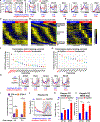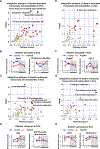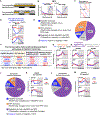The hepatocyte clock and feeding control chronophysiology of multiple liver cell types
- PMID: 32732282
- PMCID: PMC7849028
- DOI: 10.1126/science.aba8984
The hepatocyte clock and feeding control chronophysiology of multiple liver cell types
Abstract
Most cells of the body contain molecular clocks, but the requirement of peripheral clocks for rhythmicity and their effects on physiology are not well understood. We show that deletion of core clock components REV-ERBα and REV-ERBβ in adult mouse hepatocytes disrupts diurnal rhythms of a subset of liver genes and alters the diurnal rhythm of de novo lipogenesis. Liver function is also influenced by nonhepatocytic cells, and the loss of hepatocyte REV-ERBs remodels the rhythmic transcriptomes and metabolomes of multiple cell types within the liver. Finally, alteration of food availability demonstrates the hierarchy of the cell-intrinsic hepatocyte clock mechanism and the feeding environment. Together, these studies reveal previously unsuspected roles of the hepatocyte clock in the physiological coordination of nutritional signals and cell-cell communication controlling rhythmic metabolism.
Copyright © 2020 The Authors, some rights reserved; exclusive licensee American Association for the Advancement of Science. No claim to original U.S. Government Works.
Conflict of interest statement
Figures





